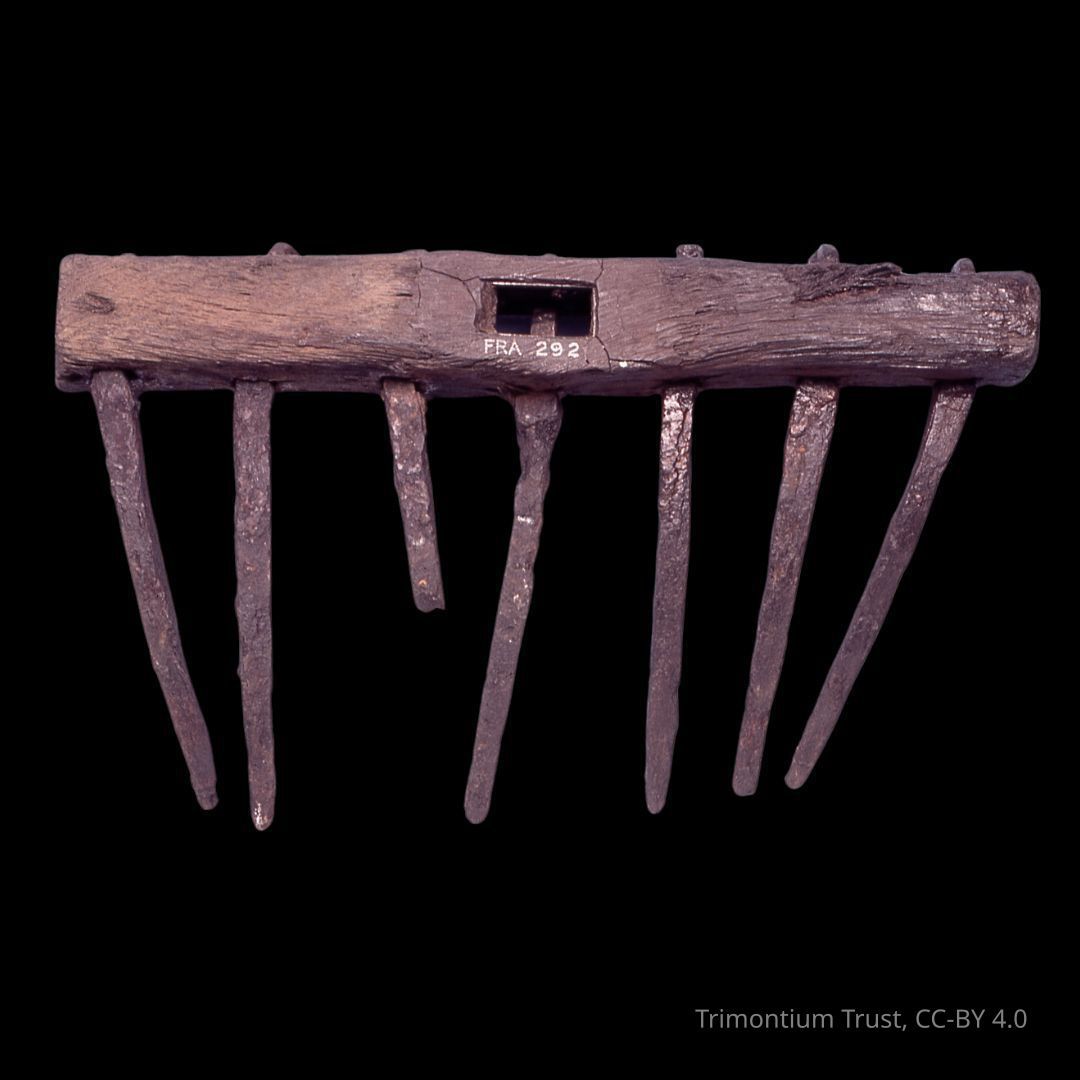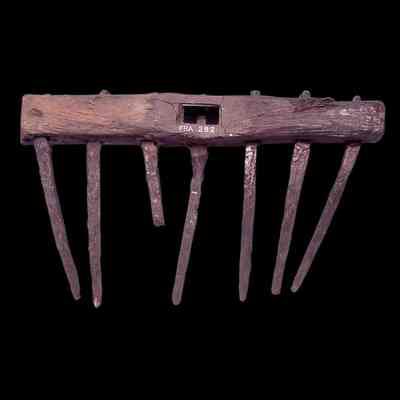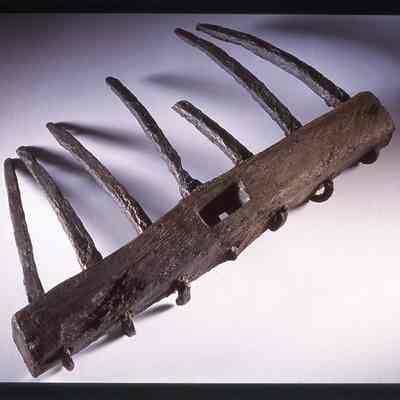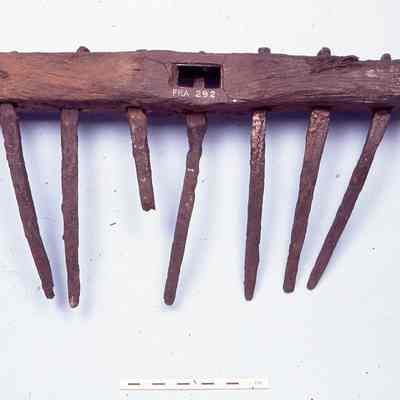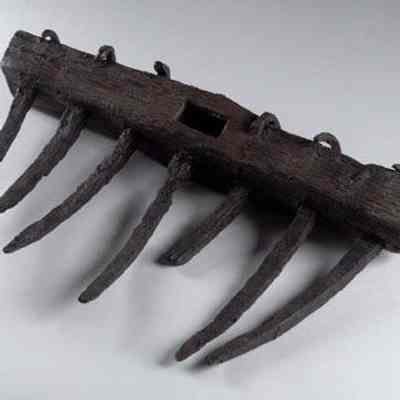Rake / head
Name/Title
Rake / headEntry/Object ID
X.FRA 292Description
Rake head of wood (oak) with iron prongs, from the Roman site at Newstead (Trimontium). The iron prongs are slightly curved. They fasten to the wooden head by doubling over the lower edge. A wooden handle would have been inserted into the central slot. 80 - 180 ADUse
Various agricultural implements, including scythes, sickles, rakes and hoes were found at the Roman fort of Newstead, suggesting that some cultivation occurred near the site.Context
Found at the baths of Trimontium, Pit LVII "A single specimen of a rake (Plate LXI., Fig. 7) came from the Baths (Pit LVII). It is formed of a wooden clog, made of oak, the length of which, when complete, was probably 13 inches. Through this have been inserted seven prongs, which project 6 inches and are slightly curved. The opposite ends of the prongs are doubled over the lower edge of the clog so as to form a fastening." - James Curle, "A Frontier..." - Chapter XIII - Tools and Implements - Implements of Husbandry p. 283Collection
National Museums ScotlandCategory
Harvest Tools
Acquisition
Accession
X.FRA 292Source (if not Accessioned)
National Museums of ScotlandMade/Created
Date made
68 - 100Time Period
1st - 2nd centuryEthnography
Cultural Region
Continent
EuropeCulture/Tribe
Romano British, Roman
